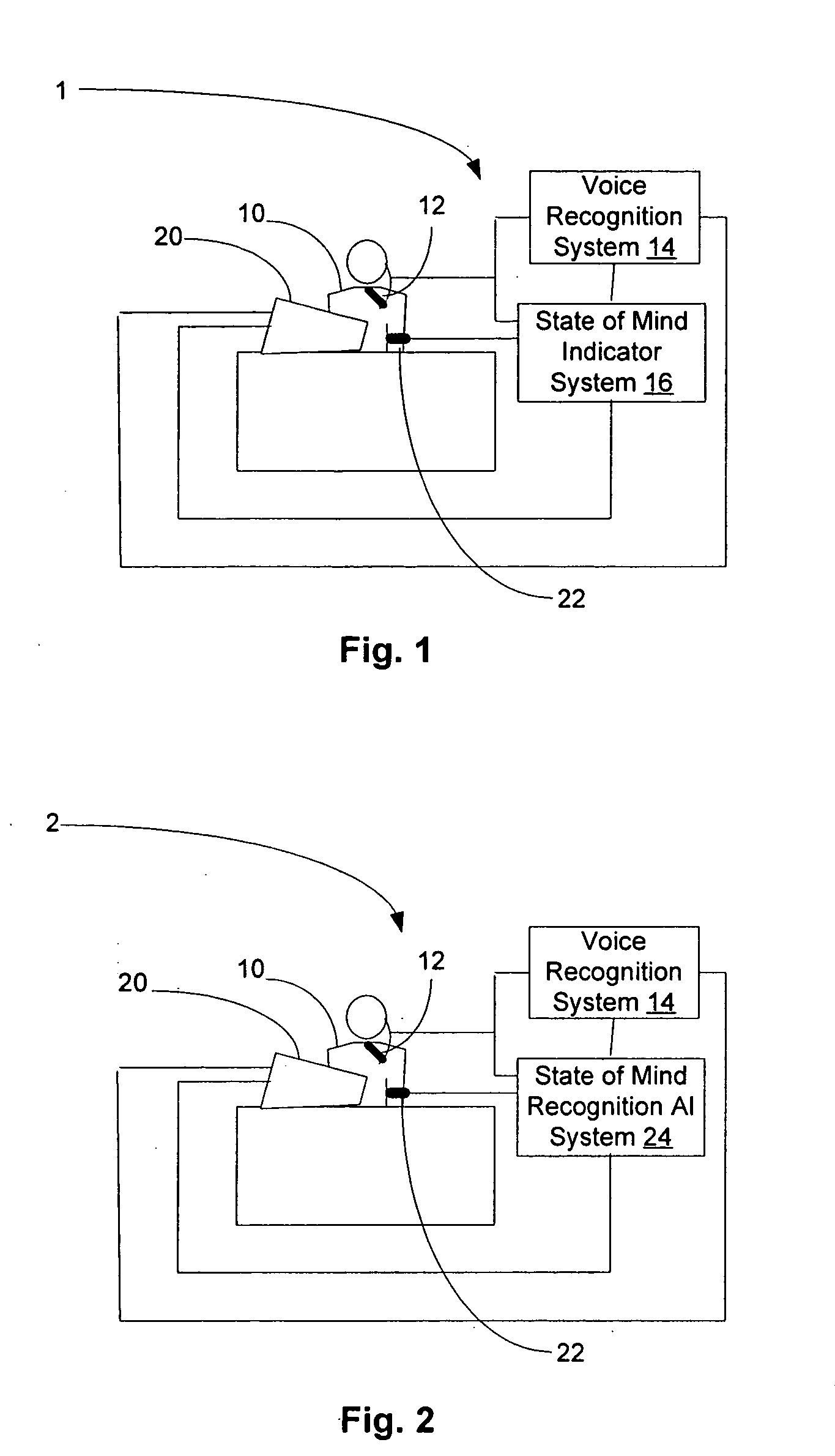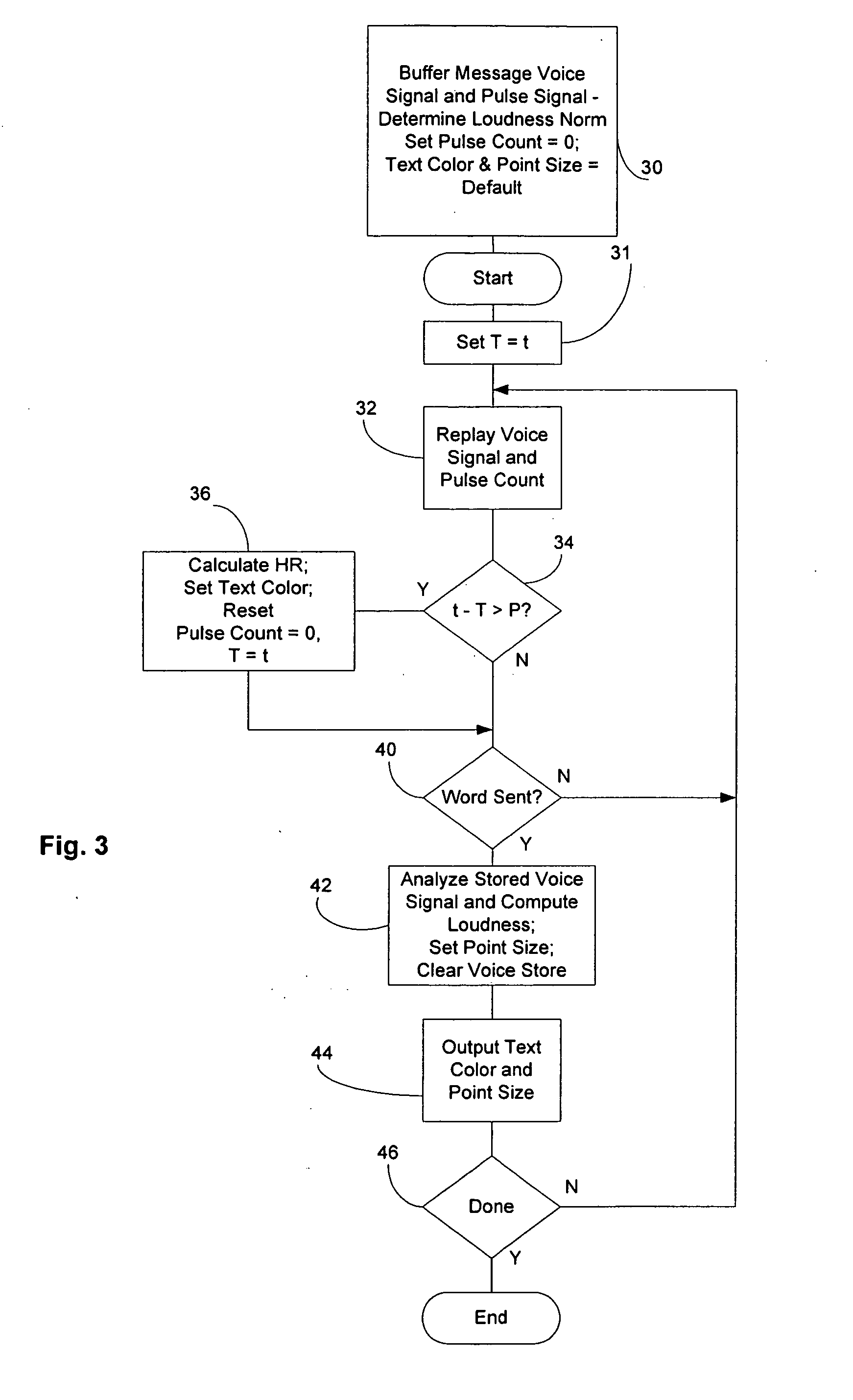Method and system for modifying printed text to indicate the author's state of mind
a technology of modifying system, which is applied in the field of method and system of modifying printed text to indicate can solve the problems of not providing the indication of the author's state of mind in a way comparable to the indication provided
- Summary
- Abstract
- Description
- Claims
- Application Information
AI Technical Summary
Problems solved by technology
Method used
Image
Examples
Embodiment Construction
[0021]FIG. 1 shows system 1 where author 10 dictates into microphone 12 which is connected to conventional voice recognition system 14 and state of mind indicator system 16 to input a signal representative of the semantic content of a message (hereinafter sometimes “message signal”) to each of systems 12 and 14. Voice recognition system 14 operates on the message signal to generate a second signal representative of a printed text having the same semantic content as the message signal (hereinafter sometimes “text signal”) and outputs it to word processing system 20 where the text signal is combined with non-semantic typographic characteristics, such as font and point size, to generate a printed text representative of the message. Such combinations of voice recognition and word processing systems are well-known and need not be described further here for an understanding of the subject invention.
[0022] System 1 also includes sensor 22 which is connected to state of mind indicator syst...
PUM
 Login to View More
Login to View More Abstract
Description
Claims
Application Information
 Login to View More
Login to View More - R&D
- Intellectual Property
- Life Sciences
- Materials
- Tech Scout
- Unparalleled Data Quality
- Higher Quality Content
- 60% Fewer Hallucinations
Browse by: Latest US Patents, China's latest patents, Technical Efficacy Thesaurus, Application Domain, Technology Topic, Popular Technical Reports.
© 2025 PatSnap. All rights reserved.Legal|Privacy policy|Modern Slavery Act Transparency Statement|Sitemap|About US| Contact US: help@patsnap.com



